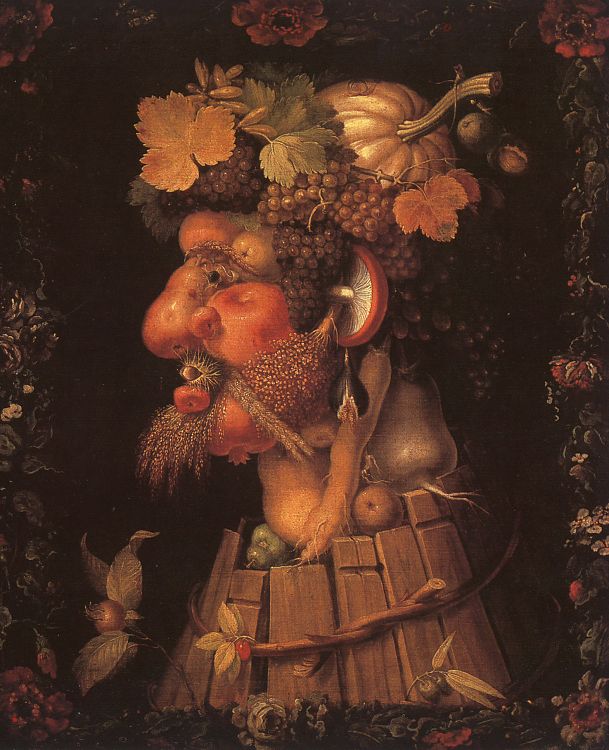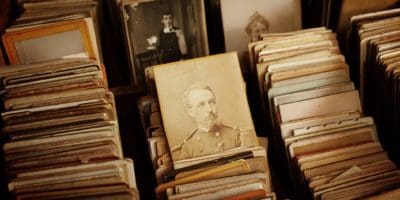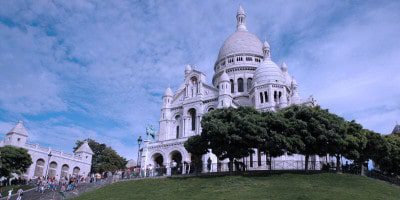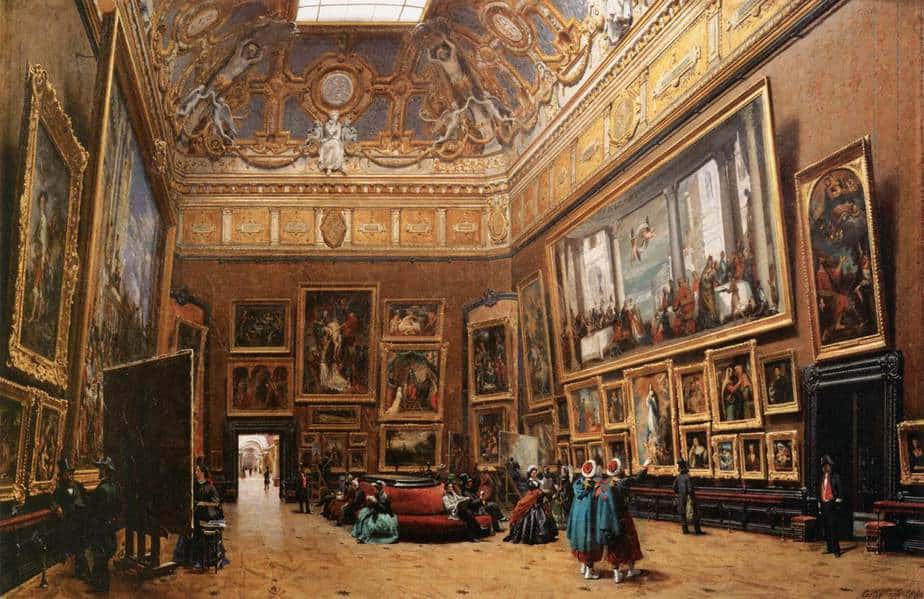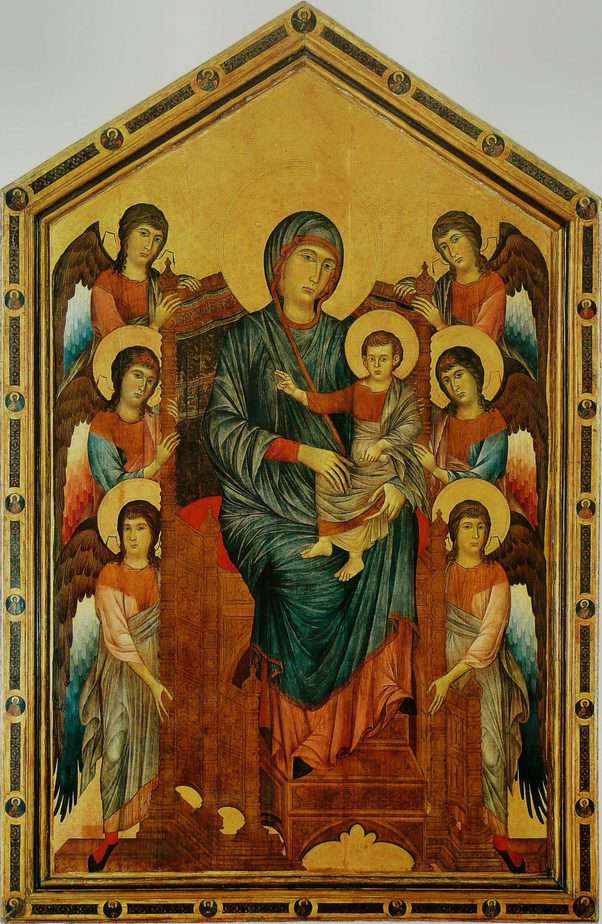10 Best Italian Paintings in the Louvre
The Italian collection is the highlight of the museum of the Louvre.
Early in the Renaissance, Italian paintings were considered the most beautiful and prestigious: that’s why François I invited Leonardo da Vinci to France, with the Mona Lisa in his luggage.
Later, the French kings and their Prime Minister completed the royal collection. When the Louvre opened as a museum in 1793, the masters of the Renaissance became accessible to the public.
Some of the most beautiful rooms and hallways of Le Louvre, the Salon Carré and the Grande Galerie, were given to the Italian collections. While the Grande Galerie can be very crowded, once you passed the turn to see the Mona Lisa, it becomes much better.
I will not cover the Mona Lisa, it is already well covered in this article. However, to be forgiven, I included two others masterpieces of Da Vinci. For me, they deserved to be appreciated as much as the Mona Lisa.
Let’s start with the paintings of the Middle Ages.
1. The maesta by Cimabue
Here is an old painting on wood, two centuries before the Renaissance but who paved the way for it. The author is Cimabue, who lived in Florence in the 13th century, what the Italians called the Duocento.
At this time, Italian art was strongly inspired by the art of the Byzantine Empire. In 1204, Byzance had been conquered by some crusaders, which on the short-run had increased cultural contacts with Italy.
This influence can be seen in the golden background representing the divine light and some body features like the long fingers.
This type of painting subject is called a Maesta: it represents the Virgin Mary with the Christ as a baby. Around them the angels, the saints are represented on the frame. This religious scene was made to decorate a church, as most of the art pieces from the Middle Ages. The artists were only considered as high-skilled craftsmen, at the service of the Church or the wealthy nobles.
Cimabue was important in the evolution towards naturalism, ie a better realism. It is visible here in the transcription of the volumes of bodies and objects.
2. Saint Francis of Assisi receiving the stigmata by Giotto
Giotto was the most talented pupil of Cimabue in his workshop. Legend has it that he was noticed very young, when as a shepherd, he used to draw his sheep.
In this painting made in 1295, Saint Francis of Assisi receives the stigmata from the Passion of the Christ. It was an answer to the prayer of the saint who asked to feel the pain endured by the Christ for us.
Under the main scene, three little paintings illustrate other moments of his life. On the left, the dream of the pope Innocent III who saw him supporting a crumbling church. In the center, the pope accepts the status of the new Franciscan order. On the right, Saint Francis speaks to the birds, demonstrating that God addresses to all the creatures.
Like for the other religious medieval paintings, this decoration of an altar was made to teach or to help memorize the Bible and the life of the saints.
This painting was an innovation and a master piece by the intensity and the emotion of Saint Francis. The clarity of the layout and the elegance of the architecture were also positively remarked.
3. The coronation of the Virgin by Fra Angelico
Here is another religious painting, this time from the Renaissance, properly speaking, in 1430. Fra Angelico, a Dominican monk, decorated with this painting the altar of the convent San Domenico de Fiesole, near Florence.
Unlike the previous paintings, the perspective of the 3D effect on a 2D canvas is very accurate. Fra Angelico benefited from some mathematical calculus and the work of his Florentine colleague Masaccio. The bright colors and the strong light give the painting a joyful feeling.
The moment represented is not strictly speaking from the Bible but from another book, the Golden Legend. Written by Da Varagine in the Middle Ages, it tells the story of many saints using various sources.
The coronation of the Virgin by the Christ in heaven symbolizes the achievement of the mission of Mary on earth. Around her, the saints of the paradise. You can recognize Mary Magdalen in her red dress and even the French king Saint Louis with his crown marked by the fleur-de-lys.
4. Venus and the Three Graces presenting gifts to a young woman by Botticelli

Venus with Three Graces presenting a gift to a young woman. From the Yorck project, sourced from Wikipedia
Le Louvre has two frescoes from Botticelli. They were found in a villa in Florence as a decoration and a commemoration of the wedding of Giovanna Albizzi with Lorenzo Tornabuoni. These Tornabuoni were nobles, allies of the dominant family of Florence, the Medicis. Botticelli worked for them in 1486.
A fresco means “fresh” in Italian. Colour was put on a fresh plaster and then the drawing was done and could not be modified once it was dry.
This one represents Venus, the Roman goddess of Love, with Three Graces. The Renaissance was the rediscovery of the Antiquity and the Greco-Roman mythology started to be represented even if nobody believed in the old gods anymore. The woman in red is the bride, receiving an unknown gift. Cupid can be seen in the corner.
It is easy to spot the works of Botticelli: he often painted the same face or almost. You can compare the face of these women with the face of Venus in his most famous painting, the Birth of Venus, exhibited in Florence.
Botticelli believed that beauty was in simplicity: there are not too many details. The beautiful draperies and faces bring the grace.
To retrieve the original fresco, it was necessary to get rid of a layer of painting. Yes, somebody got the strange idea to repaint over the work of Botticelli!
5. The Battle of San Romano by Uccello
With this painting you are plunged into a medieval battle between Florence and Siena in 1432. More precisely, into the counter-attack led by the Florentine general Cotignola.
On the right of the painting the still knights await the signal of the assault. When it is given by the general in the center, the warriors lower their lances to charge the enemy.
This painting by Uccello is remarkable because of the feeling of movement. The painting was originally brighter. The armors were covered with silver leaf that tarnished over time.
This panel was one of the three exhibited in the Palace of the Medicis in Florence. One is still visible in Florence in the Uffizi Gallery, while the other is exhibited in London.
6. Saint John the Baptist by Da Vinci
This portrait of Saint John is an innovative one. Saint John the Baptist, an ascetic man living in the desert, was never represented this way before.
There is a reason why the portrait has such an erotic charge. The model was Salai, assistant and lover of Leonardo Da Vinci. Da Vinci was homosexual in one of the few places in Europe where it could be socially tolerated: Florence.
Some said that this portrait with an enigmatic smile bears some resemblances with the Mona Lisa. This led to a theory that Salai has been used, at least partially, as a model. But that is only one of the hundreds theories around the Mona Lisa.
The use of the chiaroscuro is typical of Da Vinci: only the important part of the painting is lighted, creating a contrast that embellished the subject.
This painting was lighter, with more shades, but the layers of varnish darkened it over time. This varnish was part of a specific technique called the sfumato, a smoky effect blurring some contours, that was the specialty of Da Vinci.
7. The Virgin of the rocks by Da Vinci
This is another unusual painting. This time, it is the cave setting that is unprecedented. Like in all the paintings of Da Vinci, there is also a mysterious background, dreamlike and mystical.
The subject was commissioned by a chapel in Milano. The two babies are child Jesus and the future Saint John the Baptist. On top of them the Virgin Mary blesses her son and includes John with her right hand. The angel Uriel supports the child Jesus. John kneels in front of Jesus, his hands in a position of prayer whereas the child Jesus blesses him.
This is the conventional interpretation. However, Da Vinci was known for his love of mysteries and unclear symbols and it is possible that there was others possible interpretations.
8. Portrait of Baldassare Castiglione by Raphael
This portrait is the masculine equivalent of the Mona Lisa. At the opening of the museum in 1793, when the Mona Lisa was not so famous, the two portraits were considered equal in quality.
The subject is a friend of Raphael: the humanist and diplomat Baldassare Castiglione. Famous for being the writer of the Book of the courtier, he is a perfect example of a Renaissance gentleman with his distinguished clothing.
The focus is on the beautiful blue eyes of Baldassare: the pyramid shape of his body and the contrast with the black and grey of his clothes. The depiction of the fur is also remarkable: the spectator feels he can touch it.
9. The four seasons by Arcimboldo
This painting is certainly the most unexpected. It is a part of a collection of four paintings representing the four seasons.
Arcimboldo represented profile portraits made up of plants, fruits and vegetables corresponding to the season portraited.
The first series was offered to the Austrian emperor Maximilian of Hapsburg. It was so appreciated by the court that Maximilian commissioned some copies to offer to his ally Augustus of Saxe. These copies are the one visible in Le Louvre.
These portraits, inspired by the Italian tradition of caricature are also a tribute to Maximilian. The various geographical origins of the plants reflect the huge size of the Hapsburg’s empire.
10. The death of the Virgin Mary by Caravaggio
With this painting, we pass to the XVIIth century, with the master of the Baroque style Caravaggio. This painter was extremely inspirational for his colleagues, especially in France and Spain. His use of chiaroscuro helped define a new style of painting.
This painting started as a scandal. In 1606, Caravaggio presented his work to the clerks who had commission it to decorate the church Santa Maria della Scala in Rome. Shocked, they refused it.
Caravaggio represented the death of the Virgin Mary, with the grieving apostles and Mary Magdalen on her sides. But nobody has represented the Virgin Mary like this before.
This was considered too realistic and too crude. The only mark of holiness is a simple halo barely visible. Rumors has it that Caravaggio had used a prostitute as a model for her.
If the church did not appreciate the painting, it was remarked by Caravaggio’s colleague, Peter Paul Rubens. On his advice, an Italian duke bought it in 1607.
***
Even if I covered only the most remarkable masterpieces, there are much more to discover in Le Louvre. For instance, we did not talk about the Venetian school: Veronese, Titian, Tintoretto and others are exhibited in the same room than the Mona Lisa.
This is a chance: you can be alone to watch them while others are absorbed by the enigmatic portrait.
It is always profitable to take a private tour to get the most of these paintings.
Planning a trip to Paris ? Get ready !
These are Amazon’s best-selling travel products that you may need for coming to Paris.
Bookstore
- The best travel book : Rick Steves – Paris 2023 – Learn more here
- Fodor’s Paris 2024 – Learn more here
Travel Gear
- Venture Pal Lightweight Backpack – Learn more here
- Samsonite Winfield 2 28″ Luggage – Learn more here
- Swig Savvy’s Stainless Steel Insulated Water Bottle – Learn more here
Check Amazon’s best-seller list for the most popular travel accessories. We sometimes read this list just to find out what new travel products people are buying.

